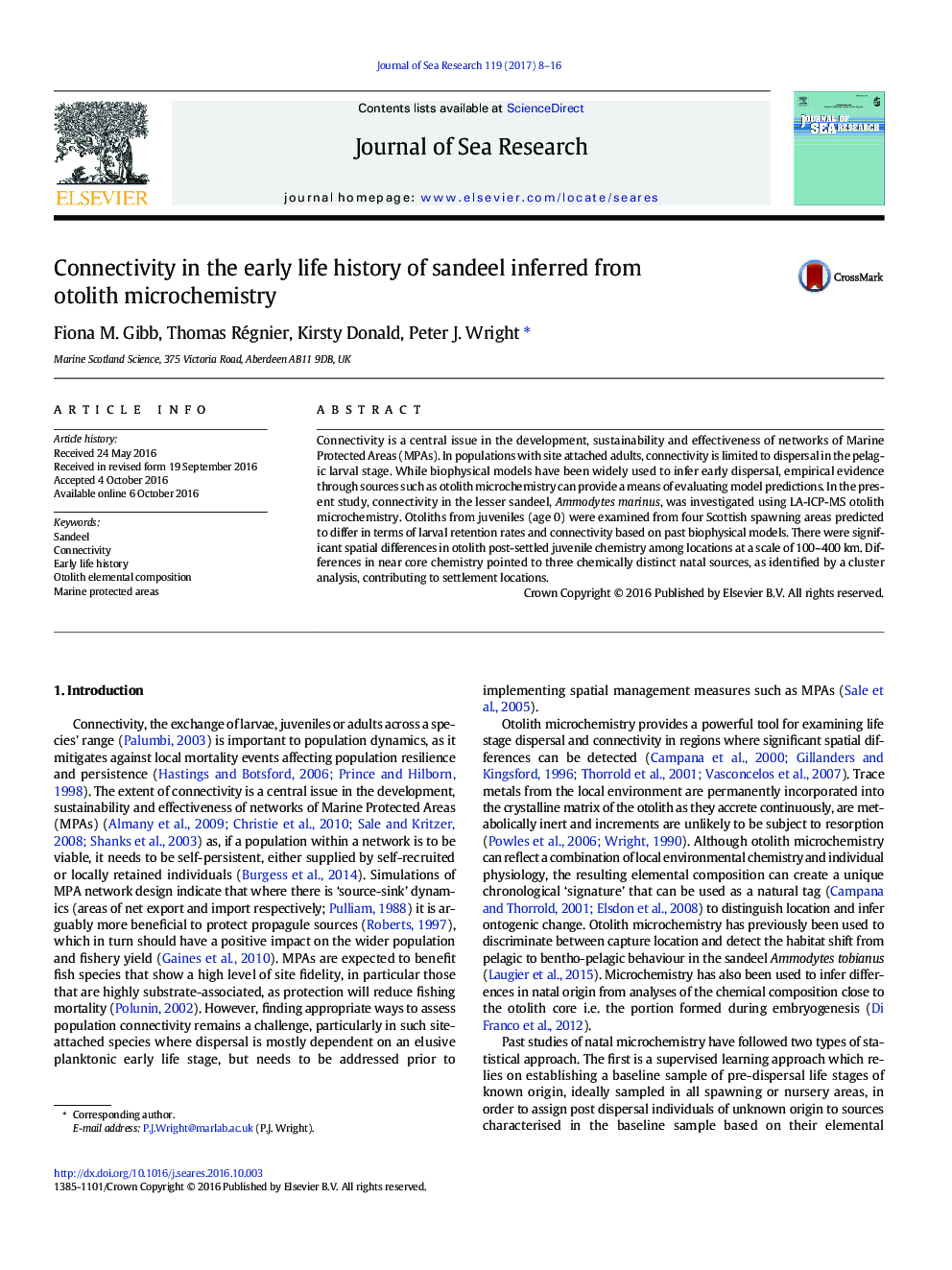| Article ID | Journal | Published Year | Pages | File Type |
|---|---|---|---|---|
| 4549497 | Journal of Sea Research | 2017 | 9 Pages |
•Otolith microchemistry reveals spatial differences in settled juvenile chemistry.•Three potential larval sources were identified by differences in natal signature.•Juveniles settling to Orkney and the North Minch share a natal signature.•Firth of Forth juveniles appear to have a largely separate natal source.•Results consistent with modelled estimates of larval dispersal
Connectivity is a central issue in the development, sustainability and effectiveness of networks of Marine Protected Areas (MPAs). In populations with site attached adults, connectivity is limited to dispersal in the pelagic larval stage. While biophysical models have been widely used to infer early dispersal, empirical evidence through sources such as otolith microchemistry can provide a means of evaluating model predictions. In the present study, connectivity in the lesser sandeel, Ammodytes marinus, was investigated using LA-ICP-MS otolith microchemistry. Otoliths from juveniles (age 0) were examined from four Scottish spawning areas predicted to differ in terms of larval retention rates and connectivity based on past biophysical models. There were significant spatial differences in otolith post-settled juvenile chemistry among locations at a scale of 100–400 km. Differences in near core chemistry pointed to three chemically distinct natal sources, as identified by a cluster analysis, contributing to settlement locations.
